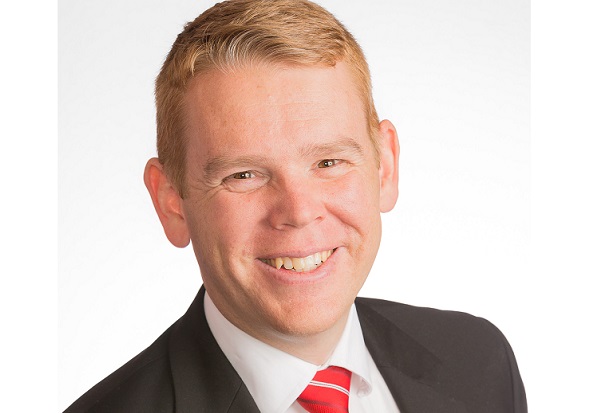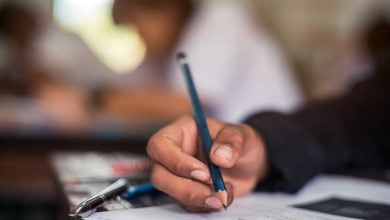What is the new plan to fix our teacher shortage?

Education minister Chris Hipkins published an optimistic statement this week that has failed to impress education bodies.
According to him, the Coalition Government is ramping up efforts to attract over 850 additional teachers to meet an expected shortfall next year. Efforts will include:
- Extra $10.5 million in funding
- Up to 230 grants of $10,000 for schools to get more graduate teachers into classrooms
- Over 6,000 overseas-based teachers targeted in new campaign
- $5 million more available for overseas relocation grants and finder’s fees
- Easier access to up to $3,000 per teacher finder’s fee to help schools offset recruitment costs
“We know that some schools and parents, particularly in the Auckland area but also in pockets around the country, are concerned that not enough teachers are coming into the system, and we are determined to pull out all the stops to meet next year’s projected shortfall,” Chris Hipkins said.
“We’re committing an extra $10.5 million, on top of the $29.5 million already announced since late last year, to ramp up teacher recruitment initiatives and increase funding for schools – bringing funding to $40 million this year to fill vacancies.”
Hipkins insists that new analysis by the Ministry of Education reveals 650 extra primary teachers and 200 extra secondary teachers will be needed in 2019 to meet a rising level of demand, driven mainly by a forecast growth in the number of students in schools.
The new analysis created a much clearer picture of demand, Chris Hipkins said, but education bodies are saying they need more accurate data.
Hipkins’ view: “We can now work with schools with much greater certainty. Our immediate focus is to get sufficient quality teachers in place for the next school year. But longer-term workforce planning is already underway, and the analysis being refined will support this work to address what is expected to be a need for even more teachers in a few years’ time.”
Backlash to the plan:
not enough data
NZPF president Whetu Cormick feels there was “no data on which to predict the shortages we are now facing”, so efforts should address the current teaching vacancies. He said: “I am hearing from more and more stressed principals that they cannot secure teachers for vacancies in their schools.”
READ MORE: Principals concerned as teacher shortage bites
NZEI TE Riu Roa President Lynda Stuart argued: “We applaud the Ministry for doing work on this after years of neglect from the previous government, when frankly we had no data we could rely on about teacher supply and demand.”.
“We urgently need data that accurately reflects the numbers of teachers needed for tamariki in our schools and early childhood education centres or the crisis will get worse because the government and sector cannot accurately plan,” Ms Stuart said.
READ MORE: Hesitant praise for new teacher supply and demand model
Hipkins’ statement, continued:
The newly announced funding package builds on initiatives that are already paying dividends, the Minister insists. The new package includes the introduction of a new grant to encourage schools to employ more teaching graduates. At present only 80 percent of graduates get a teaching job when they finish training.
“Increasing the employment of newly graduated teachers is important and the grant will support schools to mentor beginning teachers, before they take on their own classes. The grant means the Ministry can be more hands on to address location and subject shortage areas.
“We’ve also increased our overseas recruitment target for 2019 from 400 up to 900 and enlisted further recruitment agency support for schools. We’re continuing to focus on bringing New Zealand-trained teachers home, while also looking for other teachers from countries with qualifications similar to ours,” Chris Hipkins said.
“Last week Immigration NZ, working with the Education Ministry, directly emailed 6000 overseas teachers who’ve registered an interest in working here – to encourage them to take the next step. A social media campaign targeting this groups is also underway and a campaign targeting New Zealand-trained teachers working overseas will follow soon.
“The Education Ministry is working with the Teaching Council to improve the support available to overseas-trained teachers, including a focus on induction that builds the culturally responsive practices needed to work in New Zealand.
“The package also includes improvements to existing initiatives to make it easier for schools to recruit teaching staff locally, and to attract former teachers back to the profession. The Ministry will be actively promoting both the new and existing initiatives to principals, and Ministry-contracted recruiters will be doing the same,” Chris Hipkins said.
There are currently around 70,000 teachers working in around 2,500 state or state-integrated schools.
Other key changes:
- Increasing the number of Overseas Relocation Grants to match the increased recruitment drive and more availability of an up to $3,000 per teacher finder’s fee to help schools offset recruitment costs.
- Expanding the Teacher Education Refresh (TER) subsidy so it can be accessed by overseas teachers to meet certification requirements with the Teaching Council. Further support will also be provided to teachers required to repeat or re-sit aspects of the TER programme, at no further cost.
- Changes to the criteria to enable more schools to access the 3R national fund – making it easier to recruit for staff in shortage subject and isolated areas.
- Additional funding for agencies to process more overseas teacher applications.
MoE question and answer
How accurate are the estimated teacher numbers for next year?
It’s the best estimate the Ministry has produced, particularly for demand in the short term. The tool is however a work in progress. The Ministry will continue to work with the sector to refine and improve the tool’s planning assumptions for out years. The assumptions include student population and net migration forecasts teacher exit rates and expected new and returning teachers.The initiatives announced today, together with others already well underway that will also deliver additional teachers, aim to increase teacher numbers by up to 1400 next year. We’re taking this approach to create a buffer in case demand is higher than expected and/or some of the initiatives don’t deliver the desired impact.
What does the planning show in terms demand and supply after 2019?
“The Ministry will release more information about the modelling in the near future, once sector groups have been fully briefed. We’re releasing next year’s planning assumptions now, because we want to get on with promoting the new and expanded recruitment initiatives so that schools and prospective teachers can get on with it.
Do you have a regional breakdown of the numbers?
The Ministry has a regional breakdown for Auckland as that is where we anticipated the most pressure. This shows that 260 extra primary teachers and 130 extra secondary teachers will be needed to meet demand in Auckland. Further regional supply breakdowns are being considered. The Ministry needs to be sure the model produces reliable results for areas with small numbers of teachers. It is being told of demand pressures in other areas, for example: Southland, Queenstown/Wanaka are facing pressure for primary teachers and Northland and Tauranga for secondary teachers.
Where will the overseas teachers come from?
We’re continuing to focus on bringing NZ-trained teachers home. Our second focus is overseas-trained teachers who come from countries with teaching qualifications that are similar to ours. This means these teachers will mostly have their qualifications pre-approved, which speeds up things up. Those countries are: the UK, Ireland Canada, South Africa, Australia and Fiji.
What support will be provided for overseas-trained teachers to understand the New Zealand context?
The Ministry is working with the Teaching Council to improve the support available to overseas-trained teachers, including a focus on induction that builds the culturally responsive practices needed to work in New Zealand.
Why didn’t the Ministry already have a robust planninng process to anticipate the teacher demand and supply outlook.
The teacher education, recruitment and appointment systems are not integrated and do not provide good central information yet. This is not simple, but we are working to improve the demand and supply planning system.
How many beginner teachers will graduate this year?
We’re expecting 860 secondary and 1,520 primary teacher graduates this year. There has been a decline in the number of graduates in recent years, but indicative data from April 2018 records of enrolment show that more people are starting ITE qualifications than the same time last year.
The Government is also looking at options to strengthen the Initial Teacher Education (ITE) sector, including looking at ways to make teacher training more flexible so we can support a wider range of people with different sets of skills into the profession.










They have to work on teacher retention as well, which includes salary and workload. They are assuming that the current crop of teachers will remain indefinitely, which means that retirements and resignations are unaccounted for. Surely they can get the numbers of teachers leaving the profession each year.
A few years ago Teachers qualified and could not get a teaching job in Whangarei. A number left the profession because of this. Moving to Auckland was not an option because of the cost of living in Auckland. Each area where the shortage is needs to be addressed on an individual basis. It is obvious, to live in Auckland is extremely more expensive due to accommodation. Teachers in Auckland should receive an allowance compensating this. We do not want the Ministry to simply make it easier for people to become teachers. Teaching is an extremely hard job requiring time management in every day life as it is on going and changing day to day. I personally think the pass rate should be raised to become a teacher. It would be interesting to see why there is a reduced intake and an increased leaving of the profession. I have to say salary is a large part of this. Teachers are not paid enough. Also the current criteria for mothers to return to teaching should be addressed. If a women stays home to have her children and has not worked during, what I think is a five year period, of minimum three days a week, she loses her teaching degree. How sad is that, after threes years of study her degree has gone. Surely this should be addressed and the profession may have some really great teachers returning with a lot more experience in respect of life skills by mothering!